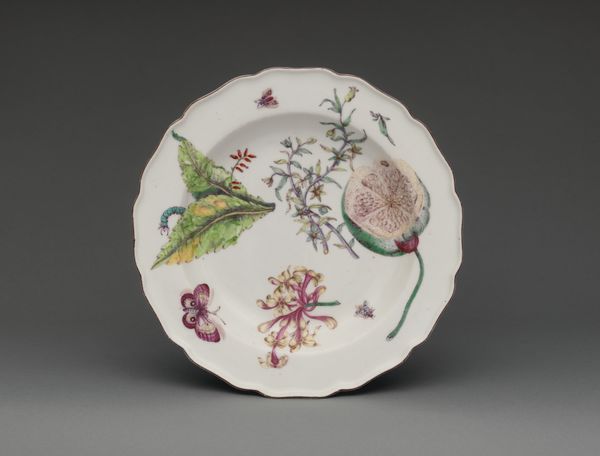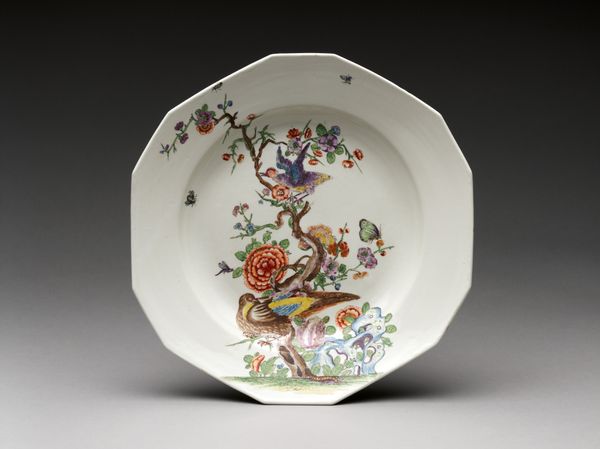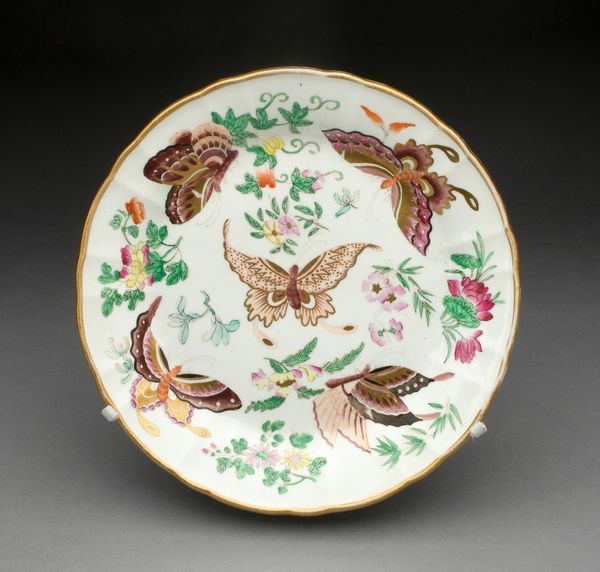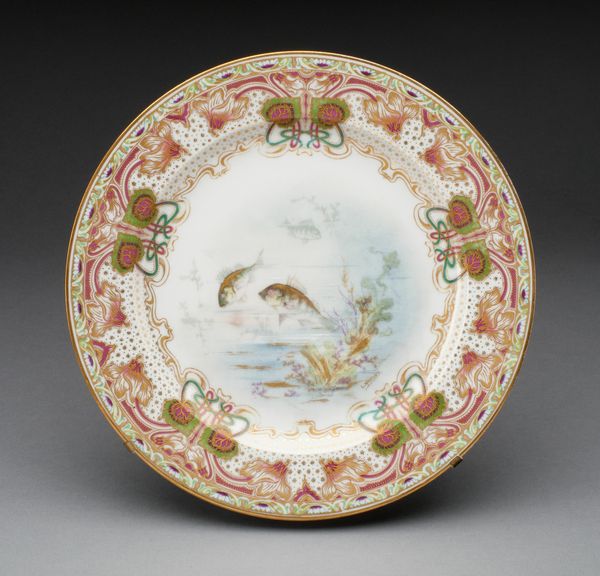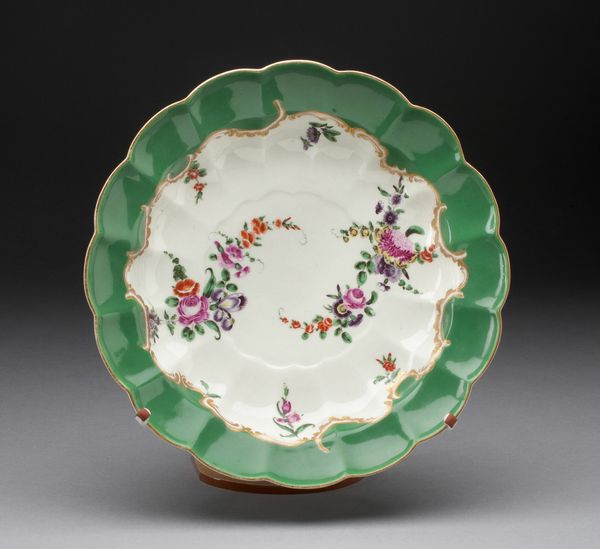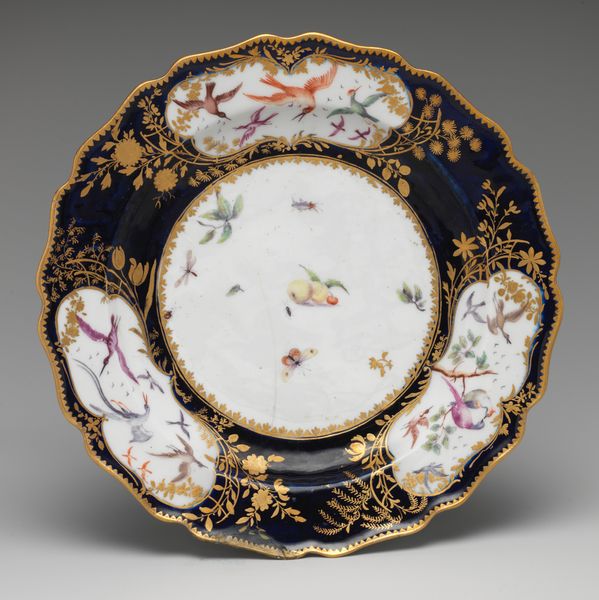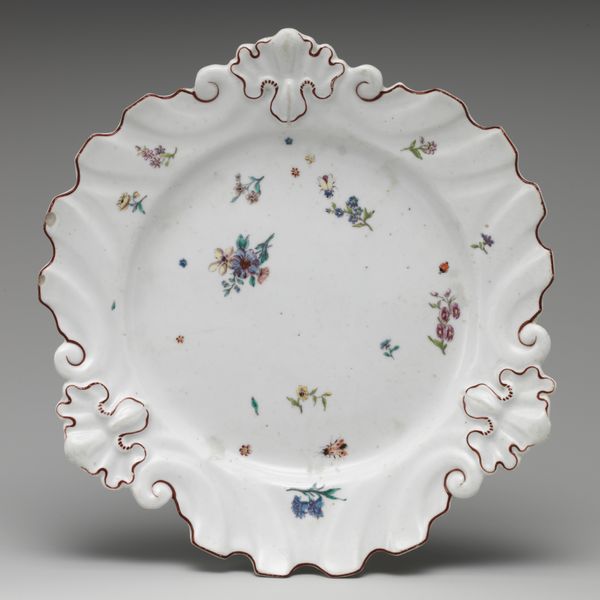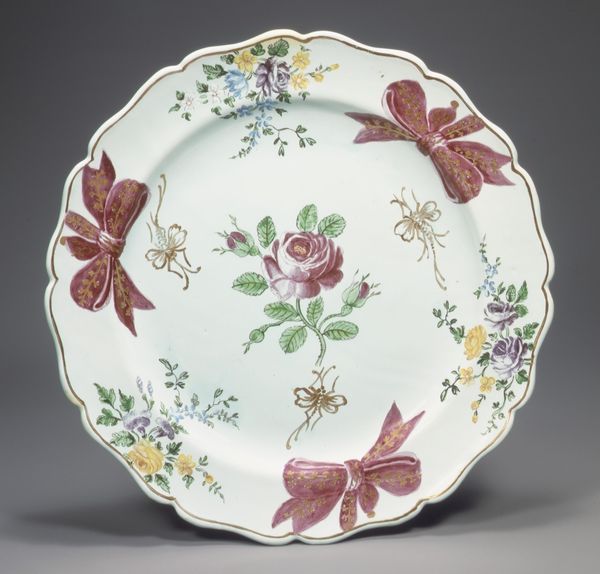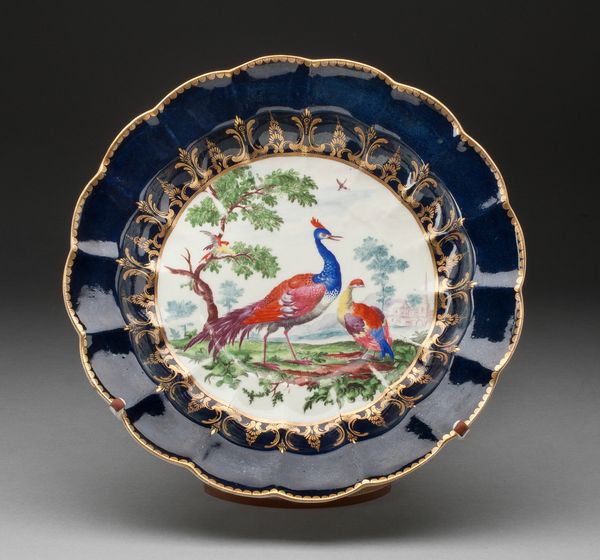
painting, ceramic, porcelain, sculpture
#
painting
#
ceramic
#
bird
#
flower
#
porcelain
#
sculpture
#
ceramic
#
decorative-art
#
rococo
Dimensions: Overall (confirmed): 1 1/2 × 9 9/16 × 8 in. (3.8 × 24.3 × 20.3 cm)
Copyright: Public Domain
Editor: So, this is a "Stand," made of soft-paste porcelain by the Mennecy factory sometime between 1760 and 1765. It's currently housed at the Metropolitan Museum of Art. It's quite lovely, and the colours are delicate. What strikes me most is the combination of ceramic form with hand-painted decoration. What can you tell me about it? Curator: Well, consider the socio-economic implications. The use of soft-paste porcelain points to very specific modes of production and consumption. This wasn't just any pottery; it was a luxury item designed for the elite. Editor: Right, only accessible to specific group, because of how it was created. So, does that influence the subject matter too, like the birds and flowers depicted on it? Curator: Absolutely. These motifs weren't simply aesthetic choices. The decoration would have reflected very specific tastes, desires, and even social aspirations of the wealthy during the Rococo period. Porcelain-making itself was quite competitive across Europe; it’s interesting to see how the French factories were innovating to try and establish market dominance in luxury goods. Notice how finely crafted this piece is, that demonstrates the skillset of those crafting and decorating it. Do you think the skill required to make something like this elevated or reduced the status of those who produced it? Editor: Hmmm... on the one hand, this piece speaks of careful labour and artistry, but was porcelain production labour-intensive? It seems those involved weren’t particularly credited. Curator: Precisely! Porcelain production involved dividing labour, which may diminish the role and acknowledgment for some workers. Understanding art's material processes reveals much about its purpose and the hands behind its making. Editor: I see what you mean! It's not just a pretty dish; it tells a story about manufacturing, the market, and social hierarchies. Curator: Indeed. Considering the material history changes our interpretation of its beauty. Thanks, it gives food for thought on the artistic process.
Comments
No comments
Be the first to comment and join the conversation on the ultimate creative platform.

